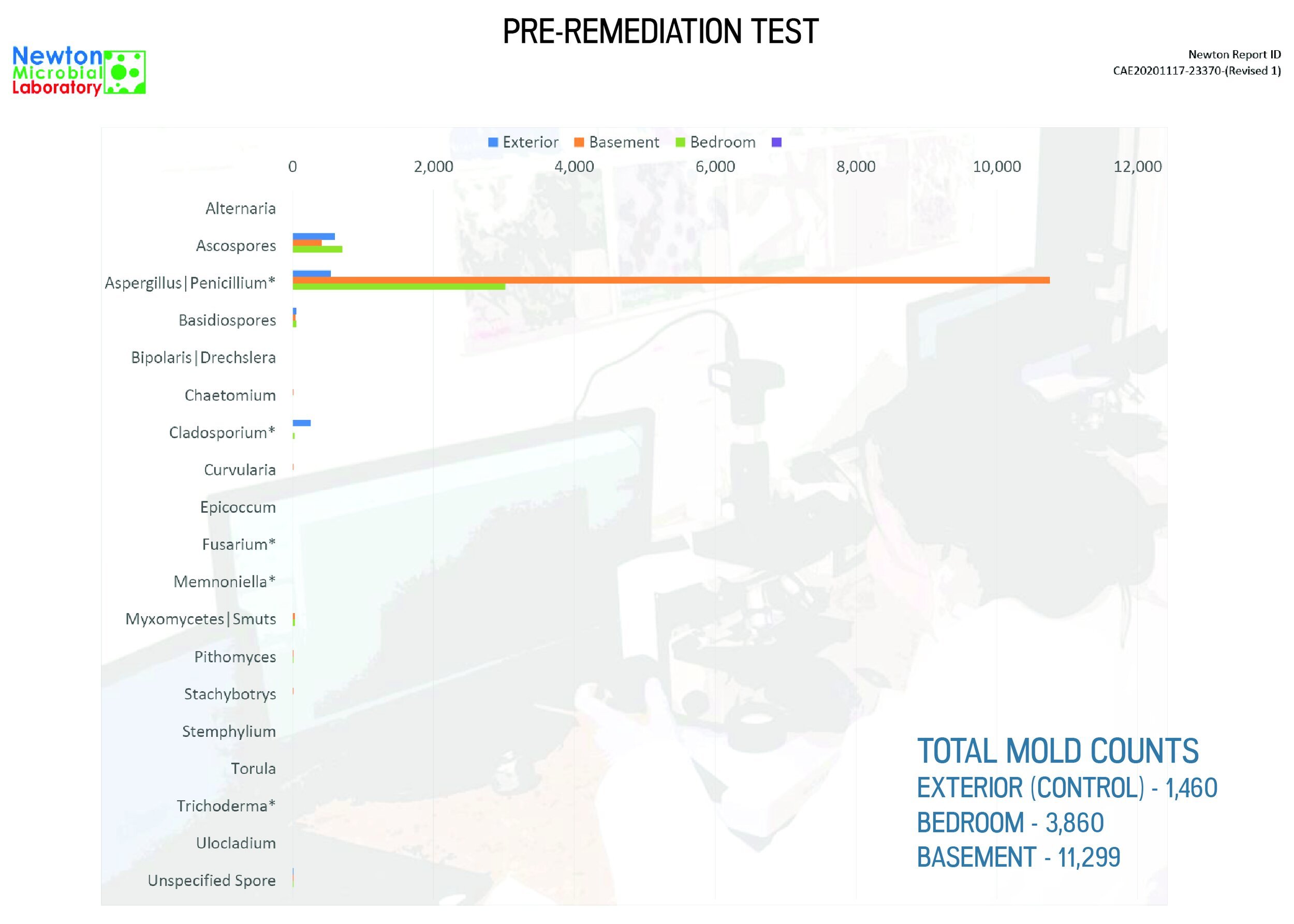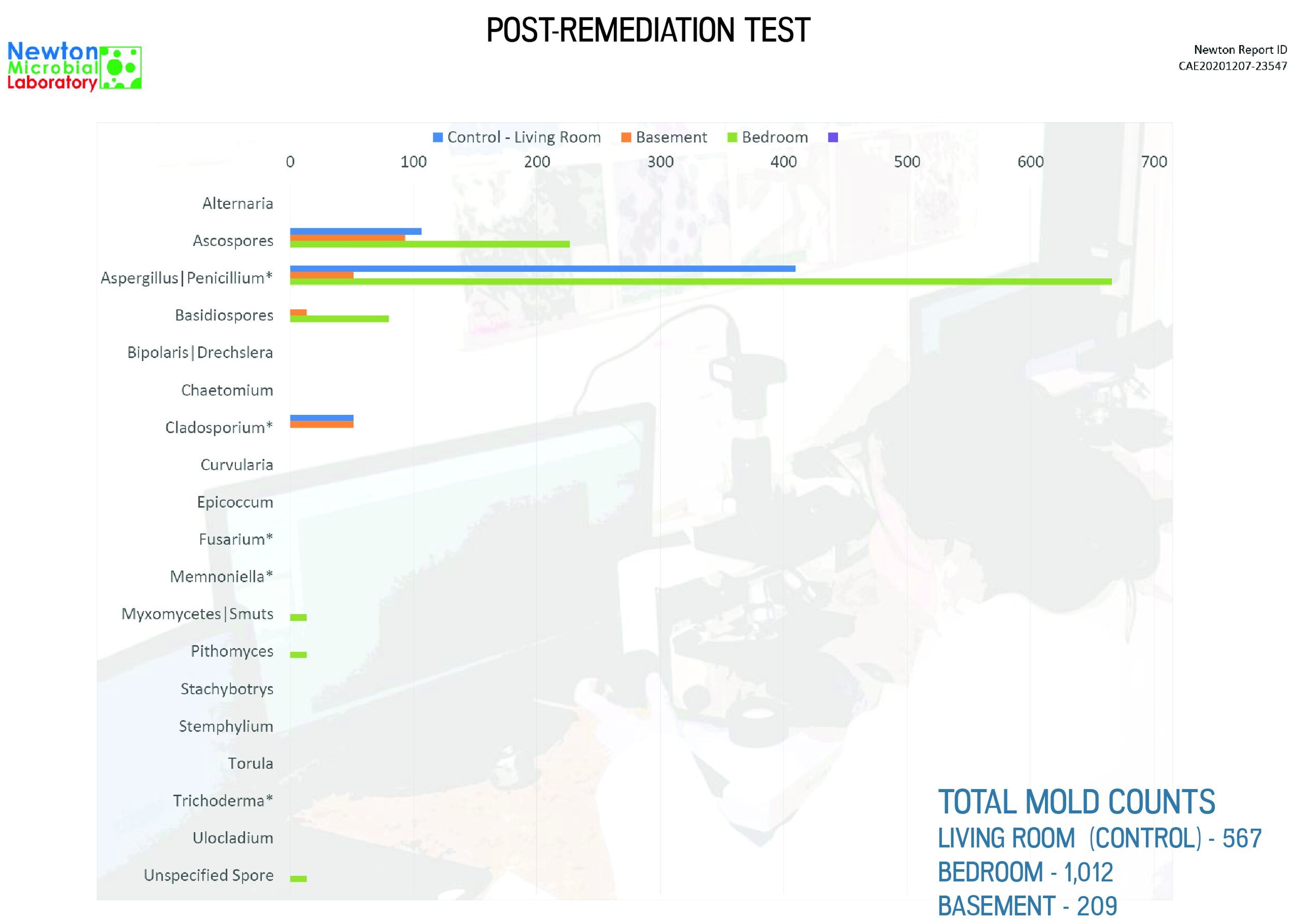Mold Related Illness
BACKGROUND
The homeowner complained to her doctor about continued allergies and respiratory issues while at home. After mentioning to the doctor that there was mold growth in various areas of the home, the doctor recommended that a mold inspection and testing should be conducted. A certified company testing company came in to perform an initial mold test. Based on the results, they suggested remediation throughout the home as well as post-remediation testing.
ISSUE
The house, built in 1957 is approximately 1100 sq/ft with an additional 1100 sq/ft unfinished basement. The entire structure and property are heavily shaded by trees and exhibit signs of extensive moisture such as moss, saturated soil, rotted wood siding, etc. Replacement windows were installed in 2019 but visible signs of water intrusion around the framing remain. The walkout basement opens to a patio that is further shaded by a second story deck. Mold growth is visible throughout the basement on ceiling joists, work benches, stored items, etc. due to a lack of any dehumidification practices. The living area of the house showed growth inside of closets, inside of furniture, on walls, on the ceiling, etc. Clogged gutters, unclosed windows, and poor home maintenance have led to water intrusion resulting in growth.
STEPS TAKEN
In this situation, the entire home required cleaning and decontamination. Air scrubbers were run throughout the home to capture any airborne contaminants. All surfaces were HEPA vacuumed and wiped down with an all-natural mold killing surface cleaner. Unfinished surfaces in the basement were treated with a high strength hydrogen peroxide and stain removing additive to kill any deeply rooted mold as well as brighten the wood to a “like-new” condition. Finally the entire home was fogged with an all-natural blend of essential oils and biologicals that consume mold, bacteria, viruses and allergens.
TESTING SUMMARY
Due to rain, the post-remediation control sample could not be taken outside the home as was done initially. Additionally, the second control sample was taken in an area of the home that had been remediated. The day after the remediation had been completed, the homeowner opened the windows in the living room and the spare bedroom (second testing location) since the fall weather has been especially mild. If we look at the original outdoor control sample of 1460, we would expect that to be contributing to the post-remediation levels of 567 and 1012 in the living areas. Since the fogging solution remains active for days to weeks after application, the mold tester recommended closing the house up and testing again but client declined as they had not yet taken steps to mitigate the moisture issue. The basement exhibited a dramatic drop as it was not affected by the outside environment via open windows.


